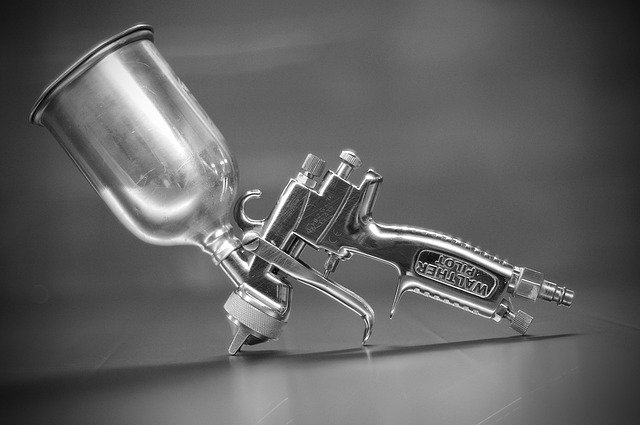How Do You Paint A Ceiling In A Stairwell?
Painting a ceiling in a stairwell can be a challenging task due to the confined space and height involved. However, with the right preparation and techniques, you can achieve a professional-looking result.
In this guide, we will walk you through the steps of painting a ceiling in a stairwell, providing tips and tricks to make the process easier and more efficient.
To paint a ceiling in a stairwell, follow these steps:
- Preparation: Before starting, gather all the necessary materials, including paint, brushes, rollers, drop cloths, painter’s tape, a ladder or scaffolding, and safety equipment like goggles and a dust mask. Clear the area beneath the ceiling and cover it with drop cloths to protect against paint spills. Use painter’s tape to protect walls and handrails from accidental splatters.
- Safety First: Safety is paramount when working in a stairwell. Ensure your ladder or scaffolding is stable and securely positioned. Use a ladder with adjustable legs or a ladder stabilizer to provide better stability. Always maintain three points of contact with the ladder while painting.
- Choose the Right Paint: Opt for a high-quality ceiling paint that is specifically designed for ceilings. These paints have better coverage and adhesion properties, reducing the need for multiple coats. Additionally, consider using paint with a matte or flat finish to hide imperfections and minimize glare.
- Cutting In: Start by “cutting in” the edges of the ceiling using a brush. Carefully paint along the perimeter where the ceiling meets the walls and any architectural features. This will create a smooth transition between the ceiling and walls.
- Rolling the Ceiling: Once the edges are painted, use a roller with an extension pole to apply paint to the rest of the ceiling. Work in small sections, using a W or M pattern for even coverage. Avoid applying too much pressure on the roller to prevent paint splatters.
- Work from Top to Bottom: To avoid accidentally brushing against wet paint, start painting the ceiling at the highest point of the stairwell and work your way down toward the bottom.
- Multiple Coats: Depending on the color and type of paint, you may need to apply multiple coats for complete coverage. Allow each coat to dry thoroughly before applying the next.
- Touch-Ups: After the final coat has dried, inspect the ceiling for any missed spots or imperfections. Perform touch-ups as needed to achieve a flawless finish.
Additional Tips and Techniques
1. Use an Acrylic Paint Additive: Consider using an acrylic paint additive that helps slow down the drying time of the paint. This will allow you more time to work with the paint and reduce visible brush or roller marks.
2. Natural Light is Key: If possible, schedule your painting project on a bright day when natural light floods the stairwell. This will make it easier to see potential imperfections and ensure even coverage.
3. Consider a Paint Sprayer: For larger stairwells, using a paint sprayer can save time and effort. However, be sure to mask off surrounding areas carefully to prevent overspray.
4. Hire a Professional: If you’re uncomfortable working at heights or lack experience in painting, it’s best to hire a professional painter. They have the expertise and equipment to handle the job safely and efficiently.
Related: How to decorate the stairwell
Additional Questions
1. How long does it take for ceiling paint to dry?
The drying time of ceiling paint can vary based on factors like humidity, ventilation, and the type of paint used.
In general, most ceiling paints dry to the touch within 1-2 hours, but it’s recommended to wait at least 4-6 hours between coats. Always check the paint can label for specific drying times.
2. Can I paint a ceiling without a ladder?
While it’s possible to paint a ceiling without a ladder, it is not recommended for stairwell ceilings due to the height and confined space.
Using a ladder or scaffolding with proper safety measures ensures stability and reduces the risk of accidents.
3. What are some common ceiling painting mistakes to avoid?
Common ceiling painting mistakes include not properly preparing the surface, using the wrong type of paint, applying too much pressure on the roller, and not allowing enough drying time between coats.
Proper preparation and following the steps outlined in this guide can help you avoid these mistakes and achieve a professional finish.
Conclusion
Painting a ceiling in a stairwell may be challenging, but with proper preparation and the right techniques, you can achieve excellent results.
Remember to prioritize safety, choose the right paint, and take your time to ensure a smooth and professional-looking finish.
By following the steps and tips outlined in this guide, you can transform your stairwell ceiling into a beautiful and refreshed space.





